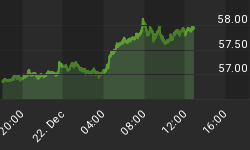Japanese trading giant Mitsubishi said last week it booked a US$320 million loss after an unnamed rogue trader made unauthorized loss-making oil derivatives trades and allegedly manipulated the risk management system to disguise his actions.
Last week’s viral story about the trading bust at a Mitsubishi subsidiary joins two long lists in the financial and oil trading history: the gallery of the rogue traders and the hall of infamous oil trades gone very, very wrong that cost financial institutions millions and/or billions of U.S. dollars and reputational damage.
The still unnamed trader at Mitsubishi’s subsidiary Petro-Diamond Singapore (Pte) Ltd now joins the gallery of infamous rogue traders Nick Leeson, Jerome Kerviel, and Bruno Iksil in the list of traders who have incurred massive losses to the financial institutions they had worked for because they had made unauthorized derivatives trades.
Without authorization, the trader at Petro-Diamond Singapore had taken derivatives positions on oil since the beginning of the year. But after oil prices started to slide at the beginning of the summer, he incurred hefty losses, costing the company US$320 million in oil bets gone wrong.
The trader wasn’t the first ‘rogue one’, nor will he be the last.
One of the most striking events involving a rogue trader took place in 1995. Back then, Nick Leeson was found to have kept secret files on rogue stock futures trades that cost Barings Bank the current equivalent of US$1 billion (827 million British pounds). Leeson’s trades in Singapore led to the collapse of London’s oldest merchant bank and the banker to the Queen. Leeson served time for his unauthorized trades. Related: Lunar Elevator Could Trigger Moon Mining Race
Leeson may have single-handedly caused the collapse of the oldest merchant bank in the City, but in early 2008, it was uncovered that Societe Generale’s junior trader Jerome Kerviel lost six times more money than Leeson for his then employer Societe Generale—US$7.2 billion. Kerviel had billions of U.S. dollars in stock index futures positions—US$73 billion to be exact. The rogue trader also manipulated the risk management system at the bank to show that he was taking lower-risk arbitrage trades, when in fact he was making very risky bets. Kerviel had made only half the arbitrage trade without offsetting long positions with short ones, for example.
In terms of money lost, Kerviel is the number-one rogue trader in history, so far.
Another high-profile trader is Bruno Iksil, also known as the ‘London Whale’, who incurred a US$6.2 billion loss at JP Morgan Chase in 2012 and triggered investigations into the bank’s practices that cost JP Morgan US$1 billion in penalties.
Apart from these high-profile ‘rogue traders’ in the financial markets, the oil derivatives market has also seen several massive trading busts over the past few decades.
In 1994, German oil and metals conglomerate Metallgesellschaft amassed a loss of US$1.3 billion on trading oil futures, which brought the group on the brink of collapse. Its largest creditor and shareholder Deutsche Bank swooped in to save it.
In 2004, fuel trader China Aviation Oil collapsed after booking US$550 million in oil derivatives losses. In the biggest scandal in Singapore since Leeson’s Barings debacle, executives were arrested and prosecuted for concealing the huge trading losses in the disastrous oil trading strategy.
In 2006, the Singapore unit of Japanese trading giant Mitsui & Co lost US$81 million on bad bets on naphtha and said a trader had falsified data to cover up the losses. Mitsui then closed all the futures and derivatives positions of the Singaporean unit across all petroleum markets. Related: Why Is Iceland The Focus of Washington’s New Trade Strategy?
Noriyuki Yamazaki, the naphtha trader who was found guilty of the fraud, had his prison sentence later reduced by an appeals court in Singapore. Masatsugu Takahashi, another Mitsui employee at the time of the naphtha trade, also saw his jail term shortened to 18 months from three years.
Early this year, Sinopec—the biggest refiner in China and in Asia—said that its trading unit Unipec booked a US$687 million loss on crude oil hedging in the fourth quarter of 2018.
“Because of wrong calls on the oil price moves, (the company) incurred losses on the futures side of the hedging when oil prices fell,” Sinopec said in January, adding that “Investigations have shown Unipec has applied some inappropriate trading strategies in hedging crude oil business,” as carried by Reuters.
A month before that, in December 2018, Sinopec said it had suspended Unipec’s president Chen Bo and senior Communist Party representative at the company, Zhan Qi, and was reviewing details of some crude oil deals that had led to losses.
In the volatile and risky oil derivatives trade, the list of rogue traders and wrong-way bets is only set to become longer.
By Tsvetana Paraskova for Oilprice.com
More Top Reads From Safehaven.com:
















